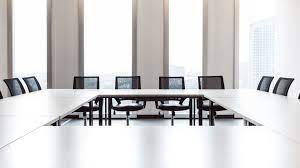The Evolution of Conference Table Fostering Collaboration in the Modern Workplace
Introduction to Conference Table

In the dynamic landscape of today’s professional world, the conference table stands as a symbolic centerpiece, embodying collaboration, innovation, and effective communication. Gone are the days of mundane, static meeting spaces. The conference table has evolved into a dynamic hub, adapting to the changing needs of the modern workplace. This article delves into the history, design, and significance of conference tables, exploring how they have transformed from mere pieces of furniture to catalysts for productivity and creativity.
Historical Perspective:
The concept of gathering around a table for discussions and decision-making dates back centuries. In medieval times, round tables were used to promote equality among knights, ensuring that each had an equal voice. Fast forward to the 20th century, and conference tables took on a more formal and structured role within corporate settings. The rectangular table became the norm, emphasizing hierarchy and order in boardrooms.
The Rise of Ergonomics:
As our understanding of workplace dynamics evolved, so did the design philosophy behind conference tables. Ergonomics became a key consideration, recognizing the importance of comfort and accessibility during lengthy meetings. Circular and oval tables gained popularity, fostering a more inclusive environment where everyone could engage in face-to-face discussions.
Technological Integration:
The advent of technology has revolutionized the way we conduct meetings. Conference tables are no longer just surfaces for note-taking; they have become integrated hubs for connectivity. Built-in power outlets, USB ports, and advanced audio-visual systems turn conference tables into interactive spaces where ideas can be seamlessly shared, discussed, and refined.
Flexible Configurations:
In response to the changing nature of work, conference tables have become more adaptable. Modular and flexible configurations allow for easy customization, accommodating various meeting formats and team sizes. Mobile tables with wheels provide mobility, enabling teams to reconfigure their workspace on the fly and fostering a sense of agility in the workplace.
Design Aesthetics and Materials:
Contemporary conference tables are not just functional; they are also a reflection of the company’s identity and culture. Design aesthetics and materials play a crucial role in creating a conducive environment for collaboration. From sleek glass tables that convey a sense of modernity to rustic wooden table that evoke warmth, the choices are vast and can be tailored to match the unique character of each organization.
Hybrid Work Environments:
The recent global shift towards remote and hybrid work models has further influenced the design and functionality of conference tables. The need for seamless integration between physical and virtual participants has led to the development of hybrid tables equipped with advanced video conferencing technology. These tables bridge the gap between in-person and virtual collaboration, ensuring that all team members, regardless of their location, can actively contribute to discussions.
The Psychology of Collaboration:
Beyond their physical attributes, conference tables play a significant role in shaping the psychology of collaboration. The round or oval shape, for instance, encourages inclusivity and equal participation, fostering a sense of unity among team members. Transparent materials promote transparency in decision-making, while standing or height-adjustable tables encourage a more dynamic and energized meeting environment.
Sustainability and Corporate Responsibility:
In an era where sustainability and corporate responsibility are paramount, conference tables are not exempt from scrutiny. Organizations are increasingly opting for eco-friendly materials and sustainable manufacturing processes when selecting furniture. Conference tables made from recycled materials or sourced from responsibly managed forests not only contribute to a positive environmental impact but also align with a company’s commitment to social responsibility.
Future Trends:
Looking ahead, the meeting table is likely to continue evolving in response to emerging trends in workplace dynamics and technology. Artificial intelligence and augmented reality may find their way into conference room setups, enhancing the overall meeting experience. The concept of “smart” tables, equipped with interactive surfaces and intuitive controls, may become more prevalent, transforming traditional meetings into immersive and collaborative experiences.
Conclusion:
The conference table, once a static piece of furniture, has metamorphosed into a dynamic facilitator of collaboration, reflecting the ever-changing nature of the modern workplace. From its historical roots to the incorporation of cutting-edge technology, conference tables have adapted to meet the diverse needs of today’s professionals. As organizations strive to create workspaces that inspire creativity, innovation, and effective communication, the conference table remains a focal point in shaping the future of collaborative endeavors.


